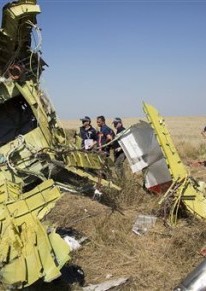By John Bayley and Gareth Jones, McLarens Aviation
2014’s high-profile losses – Malaysia Airlines suffered the loss of two planes in little more than five months, as well as other high-profile losses such as the Air Algerie crash in July – were tragic and hugely significant for the industry. While the aviation insurance market has long been highly competitive, with loss frequency reducing pretty much year-on-year, as well as increased underwriting capacity, it will be interesting to see if the losses this year have an effect, at the very least in the war risk market. Recent figures from Lloyd’s estimated this year’s aviation hull war insurance losses at $600m, almost 10 times the amount generated by global premiums (roughly $65m).
Events modify what insurers will agree to cover and during renewals there will no doubt have been price considerations as well as reviews for the type of coverage provided. The fact is there are more places in the world that are politically unstable and risky, which is an interesting conundrum for insurers and service providers to offer the support required to their respective clients.
From a claims-management perspective this has presented a number of challenges. In the financially astute times we now all operate in, managing financial expectations and handling claims settlements is a huge task, Moreover, given there are a number of ongoing wars, the practicalities and logistics of dealing with such claims are much more difficult. We have had a number of our own surveyors flying out to various war-zones including Iraq, Libya, Afghanistan, and Mali.
Of course, there are areas of the market that have not been affected by these tragic events and on the more general hull liability side there have not been any major incidents of this kind this year. On the hull side there have been consistent reductions in the number of major losses for the last decade or so: an indication of how good the industry has been from a safety standpoint. Passenger safety continues to improve, with 2013 being the safest year on record and 2014 also impressive if you exclude those war risk losses.
Attritional loss
While major losses have been dominating the headlines, the number of attritional losses (typically in the $5m to $10m loss bracket) has, from our own claims data at least, held steady. Given equipment and technology values are increasing, such losses continue to be front of mind for insurers: this is an area over which the industry has much greater control. That such losses have been consistently high in recent years eats into the premium base and, as such, insurers are increasingly aware that costs (including claims management) need to be controlled. This an area in which loss adjuster work closely with airlines, repairers and indeed the airlines’ insurers to develop economic solution to repairs al parties can live with.
The ground handling process is one from which a significant amount of attritional losses derive. Ground handling agreements, which define the obligations and accountabilities of the parties involved in the ground handling process, have been gradually changing over the past 20 years or so. These have arguably moved largely in favour of the carriers (transferring more liabilities on to handling companies in the process) and it is fair to say in 2014 we are still seeing carriers looking to get more.
The corporate jet arena has also been busy in this respect. There has been a notable increase in the ownership and use of corporate jets and in our own caseload we have certainly seen more knocks and impacts in 2014 than there were two or three years ago. There is also a recognition in the business jet world that the safety culture and procedures need to keep pace with the increase in number of aircraft flying.
John Bayley is UK Director of Claims and Gareth Jones is Head of Aviation Liability at McLarens Aviation.
This article was originally published in Insurance Day’s December 2014 issue.
Flying Over The War Zones
Please click the button below to download a copy of this article. Image credit: 2014 Dmitry Lovetsky/AP





